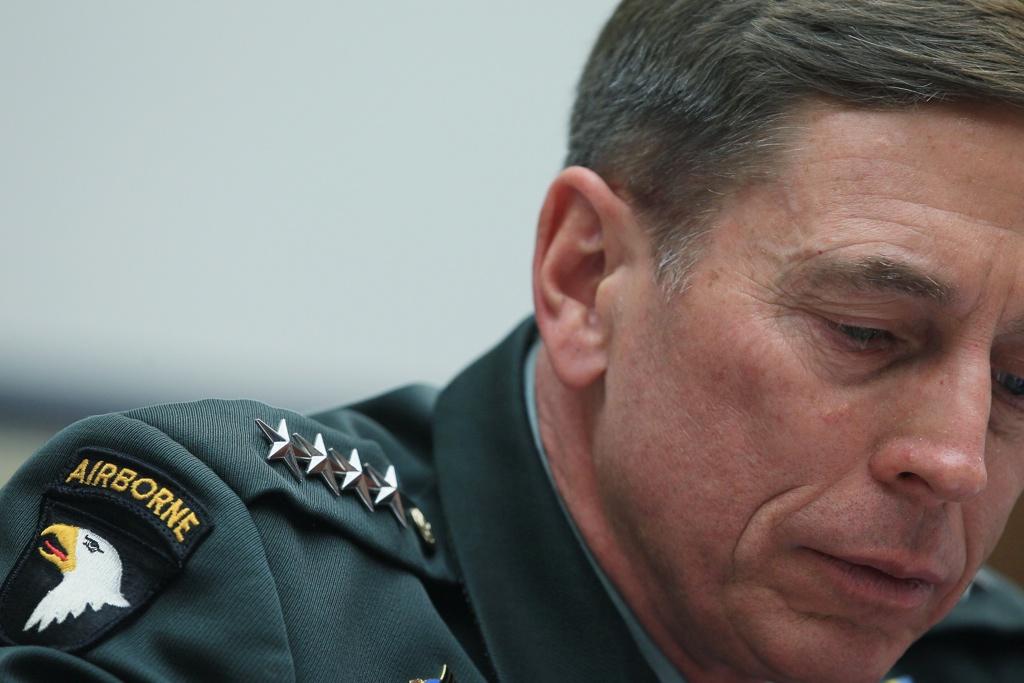Petraeus: the good news general
Gen. David Petraeus, commander of the International Security Assistance Force and commander of U.S. Forces Afghanistan, participates in a House Armed Services Committee hearing, March 16, 2011 in Washington, DC.
The good news just continues to roll in. The Taliban have been “decimated,” “beaten back,” or “arrested,” depending on your news sources.
Gen. David Petraeus, in testimony before the Senate Armed Services Committee yesterday, said that the bad guys were on the run:
“The momentum achieved by the Taliban in Afghanistan since 2005 has been arrested in much of the country and reversed in a number of important areas,” he said. “However, while the security progress achieved over the past year is significant, it is also fragile and reversible.”
Sitting in a newsroom in Kabul on the same day, I was a bit surprised. We had reports of an explosion in Laghman province that killed the former head of the Provincial Council; two explosions in Nangarhar that killed at least one, and an airstrike by the U.S.-led International Security Assistance Force (ISAF) in Kunar that killed two children out working in their fields. Apparently the spades they carried on their shoulders looked too much like weapons.
And this was a quiet day.
Over the past week, Kunduz has seen dozens of casualties from suicide attacks; ISAF operations in Helmand have killed several and arrested more; and a cousin of the Afghan president was shot by mistake in a botched raid in Kandahar.
In the last month Kabul itself has become quite a bit dodgier; a supermarket popular with foreigners was bombed, killing at least 14, and City Center, Kabul’s first “mall,” was hit for the second time in a year. At least two died, and most of the shops are still closed.
Afghanistan’s Senate has called for the defense minister to step down in view of the rapidly deteriorating situation, and there is still no agreement internally on whether it would be acceptable to talk to the Taliban.
That doesn’t sound like good news to people here.
The United States has about 100,000 troops on the ground, is spending $100 billion a year to finance the conflict, and is looking for more resources on the one hand and a long-term commitment on the other.
But the latest public opinion surveys show that the American populace is getting fed up with the lack of progress in Afghanistan. Nearly two-thirds of those polled say that the war is no longer worth fighting.
No wonder Petraeus, the suave, articulate architect of the counterinsurgency strategy should feel some pressure to be upbeat.
Wherever I look I see reports of the gains being made in the volatile south. But having spent several years working in Helmand province, I am listening to different sources.
Residents in Nawa, a district billed as “the region’s biggest success story,” are being terrorized by night raids conducted by the U.S. Special Forces. They are turning ever more radically against the foreign troops, which will make the whole “hearts and minds” thing a bit of a stretch.
In Marjah, we are told, the Taliban have been cleared. This is not the first time their departure has been announced, of course; just days after the U.S. troops began a massive operation in Marjah, in February 2010, victory was declared. It took another year for any noticeable signs of progress to appear.
But residents say the Taliban never left; they just blended back into the population, invisible to outsiders, ready to make their move when the opportunity presents itself.
The military is touting their success, and anticipating victory. But they should pay a bit more attention to what is actually going on in the villages and districts they are “pacifying.”
One sign of the disconnect between perception and reality is the local defense program — known by a variety of names, ranging from Village Defense Platforms to Afghan Public Protection Force to Afghan Local Police. The plethora of monikers should not conceal the reality behind these guys with guns — they are militias.
Most owe their loyalty to a single commander, and pursue their own agendas in their home villages. They may want to keep out the Taliban, or they may have other ideas.
We are told that they are vetted and controlled by the local shuras, or councils; this is the ideal, but far from always the practice.
In Marjah, where the Afghan Local Police has been credited as being responsible for an uptick in security, residents say the governor had to step in and disarm some of the local boys, since they were taking the opportunity to settle personal scores.
But the U.S. military has high hopes of being able to hand over some security duties to these groups, and they are quick to register positive signals.
In the Gizab district of Uruzgan last year, when villagers armed and trained by U.S. Special Forces rose up against the Taliban, it was dubbed a “breakthrough” by a State Department official, and “perhaps the most important thing that has happened in southern Afghanistan this year” by a U.S. commander.
Wishful thinking, it turns out. According to Martine van Biljert, of the Afghanistan Analysts’ Network “rather than a turning point, it was part of the ebb and flow of power relations — not necessarily good or bad, mainly ambiguous, highly fragile and utterly reversible.”
In Afghanistan, the real situation usually exists far outside of the official report, which is based on optimistic assessments, driven by unrealistic targets, and delivered by those with a vested interest in painting a narrative of success.
Every day, reporters and producers at The World are hard at work bringing you human-centered news from across the globe. But we can’t do it without you. We need your support to ensure we can continue this work for another year.
Make a gift today, and you’ll help us unlock a matching gift of $67,000!
